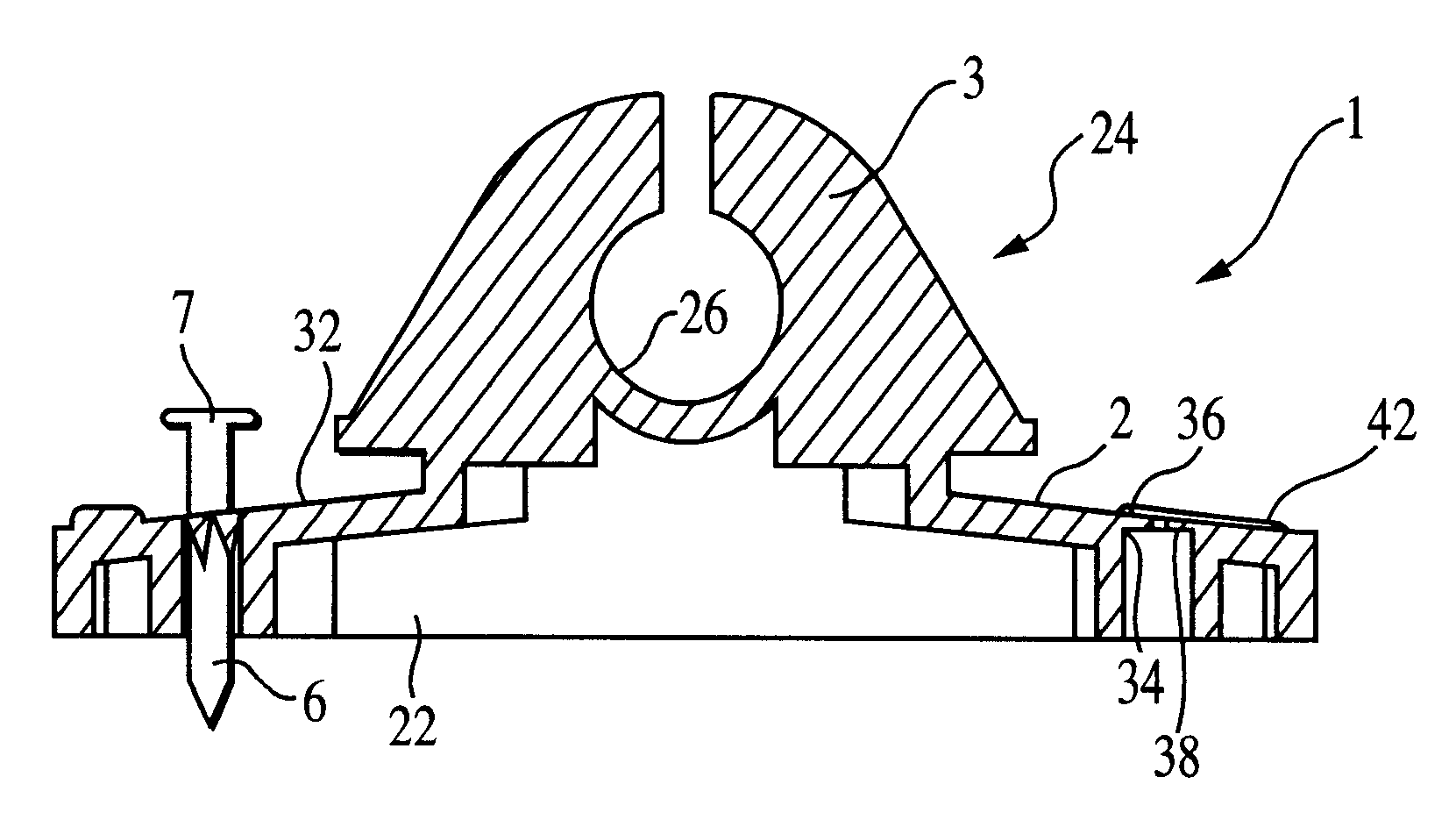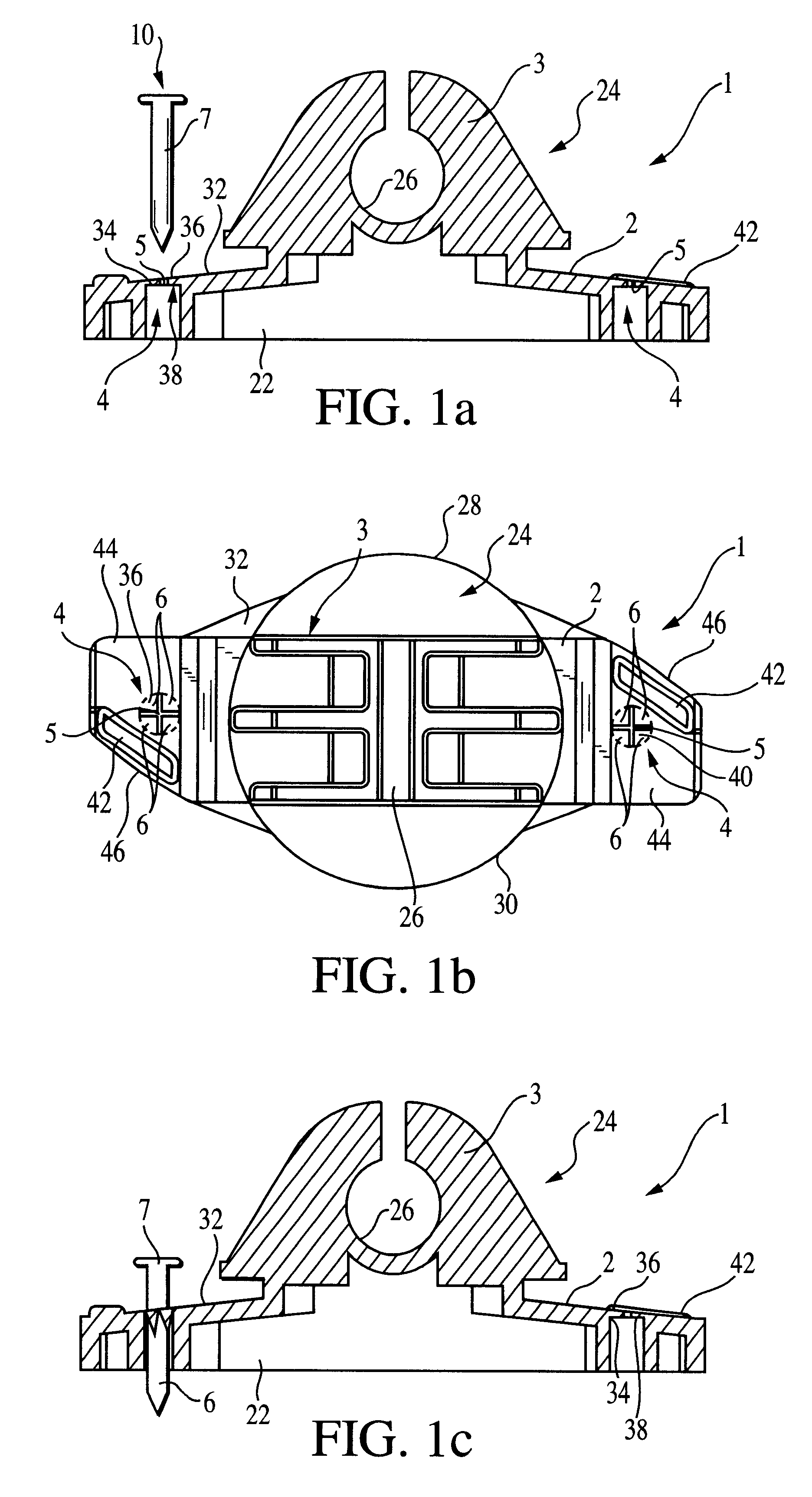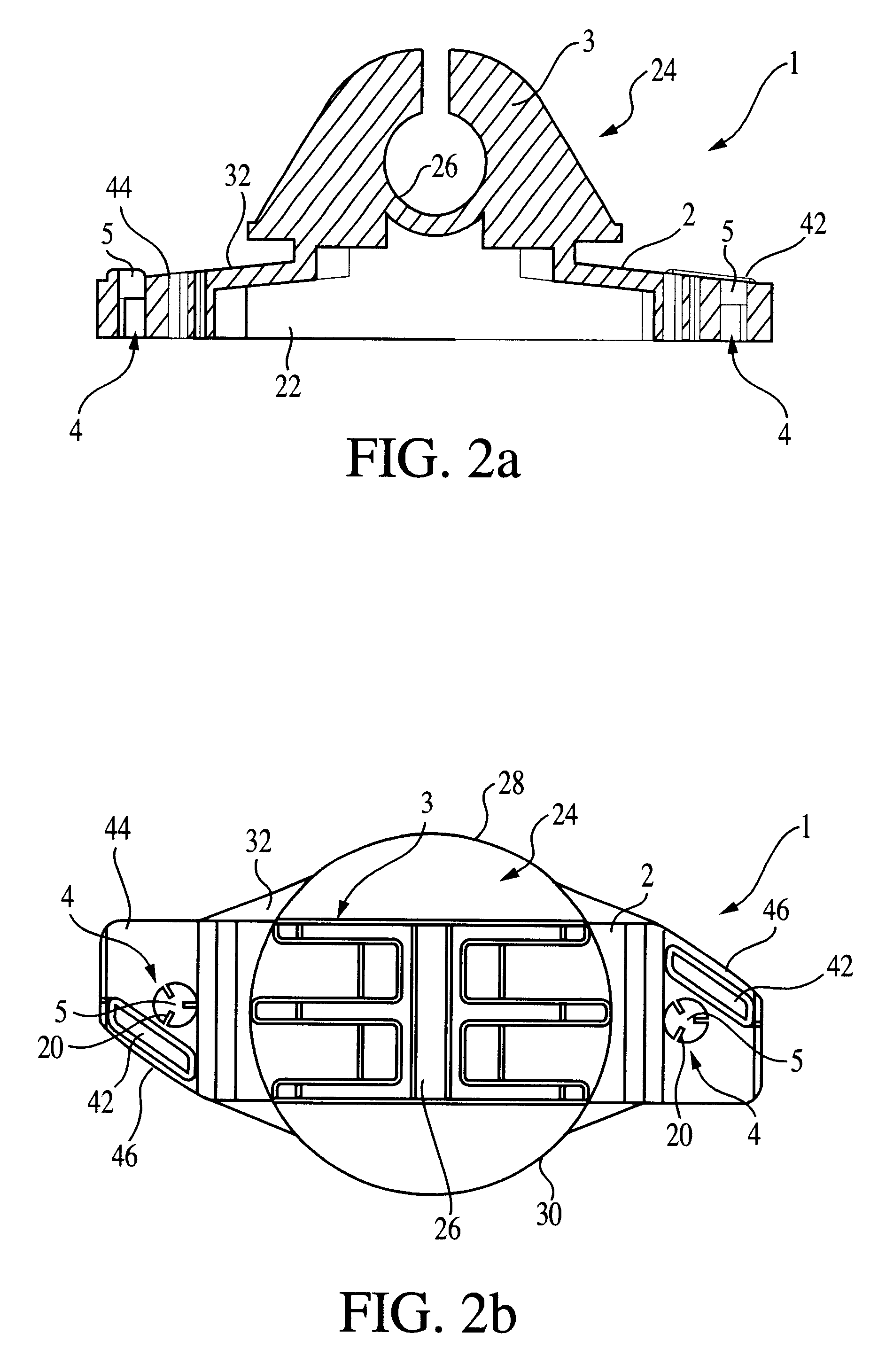Insulator retainer
a technology of retainer and insulator, which is applied in the field of retainer, can solve the problems of wasting resources, increasing the chance of hitting your thumb or finger, and the fixing element must be directly held, so as to achieve less fiddly exercise, less time to be spent on exercise, and less loss of resources
- Summary
- Abstract
- Description
- Claims
- Application Information
AI Technical Summary
Benefits of technology
Problems solved by technology
Method used
Image
Examples
Embodiment Construction
With respect to FIG. 1 there is illustrated in FIGS. 1a) and 1b) a side and plan view respectively of one preferred embodiment of insulator generally indicated by arrow 1.
The insulator 1 consists of a main body 2 and an electric fence wire support 3.
The main body 2 of the insulator 1 has two retaining-portions 4 consisting of an opening 5 which has four flaps 6 extending therein which have been demarcated by a dotted outline for ease of visual perception only.
In use a fixing element in the form of a nail 7 may be inserted into the retaining-portion 4 in the direction indicated by arrow 10.
Inserting the nail 7 into the retaining-portion 4 causes the flaps 6 to deform to accommodate the girth of the nail 7 as is shown in FIG. 1c). By this means the flaps 6 are able to, once the nail 7 has been inserted, frictionally engage the outer surface of the nail 7 to prevent it from dislodging from the insulator 1.
With respect to FIG. 2 there is illustrated in FIGS. 1a) and 1b) a side and plan ...
PUM
 Login to View More
Login to View More Abstract
Description
Claims
Application Information
 Login to View More
Login to View More - R&D
- Intellectual Property
- Life Sciences
- Materials
- Tech Scout
- Unparalleled Data Quality
- Higher Quality Content
- 60% Fewer Hallucinations
Browse by: Latest US Patents, China's latest patents, Technical Efficacy Thesaurus, Application Domain, Technology Topic, Popular Technical Reports.
© 2025 PatSnap. All rights reserved.Legal|Privacy policy|Modern Slavery Act Transparency Statement|Sitemap|About US| Contact US: help@patsnap.com



